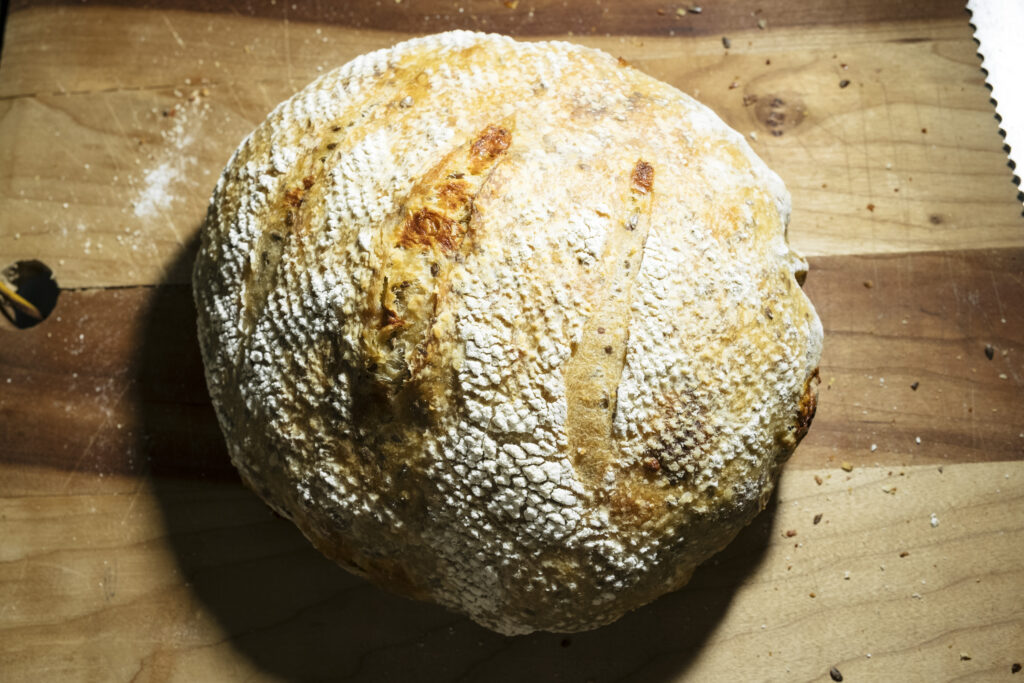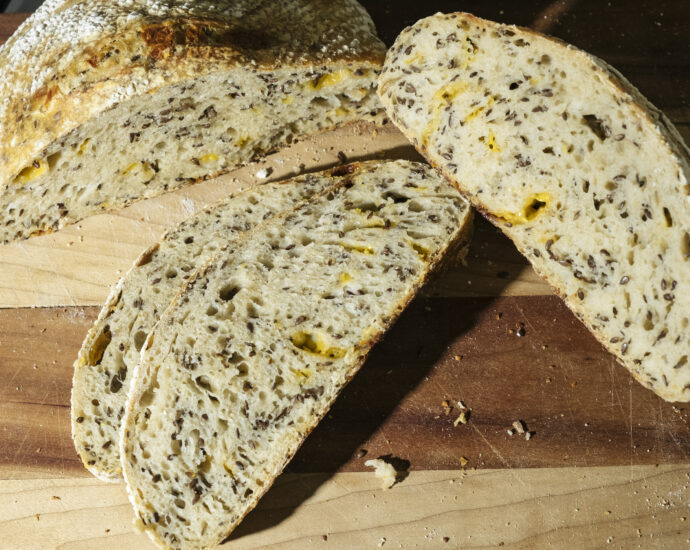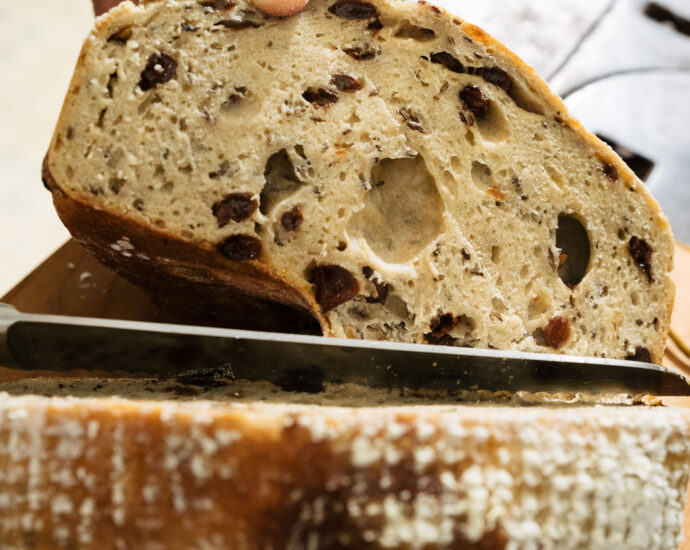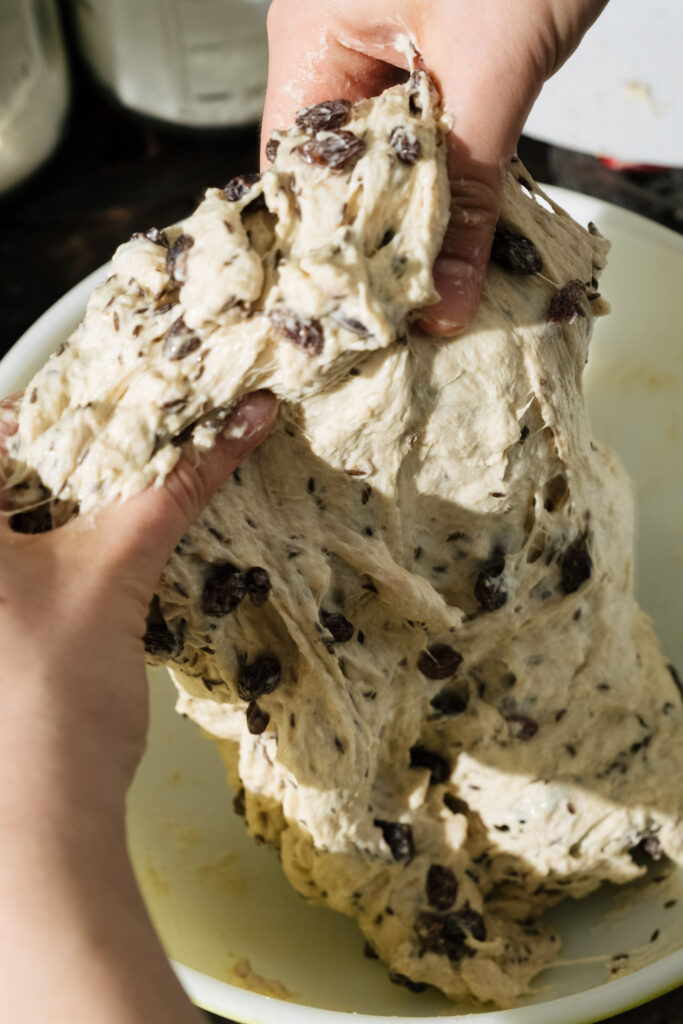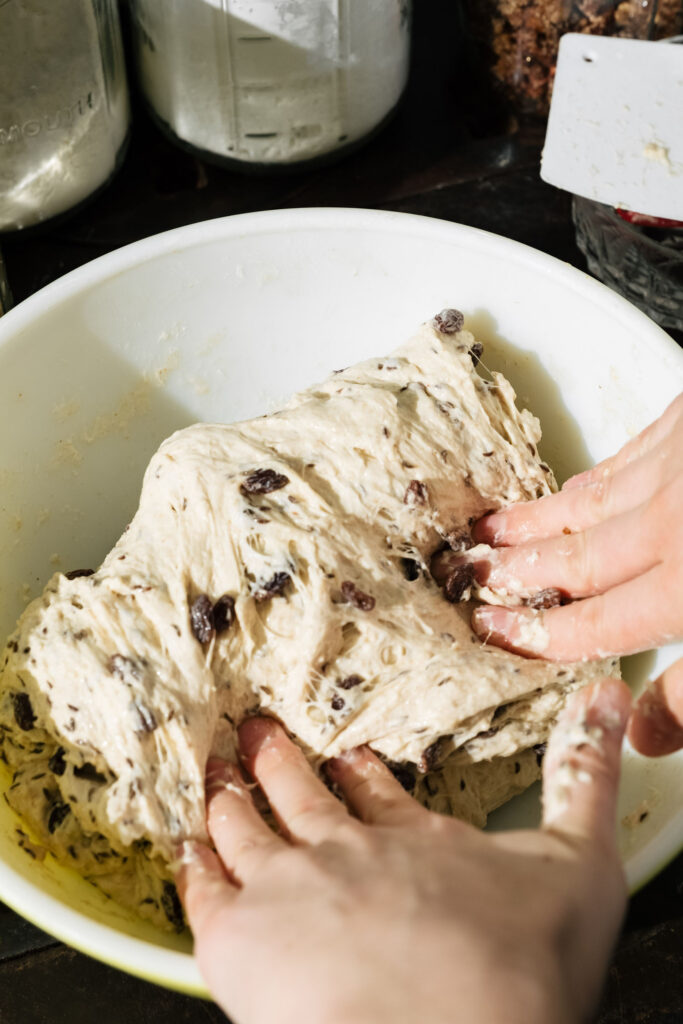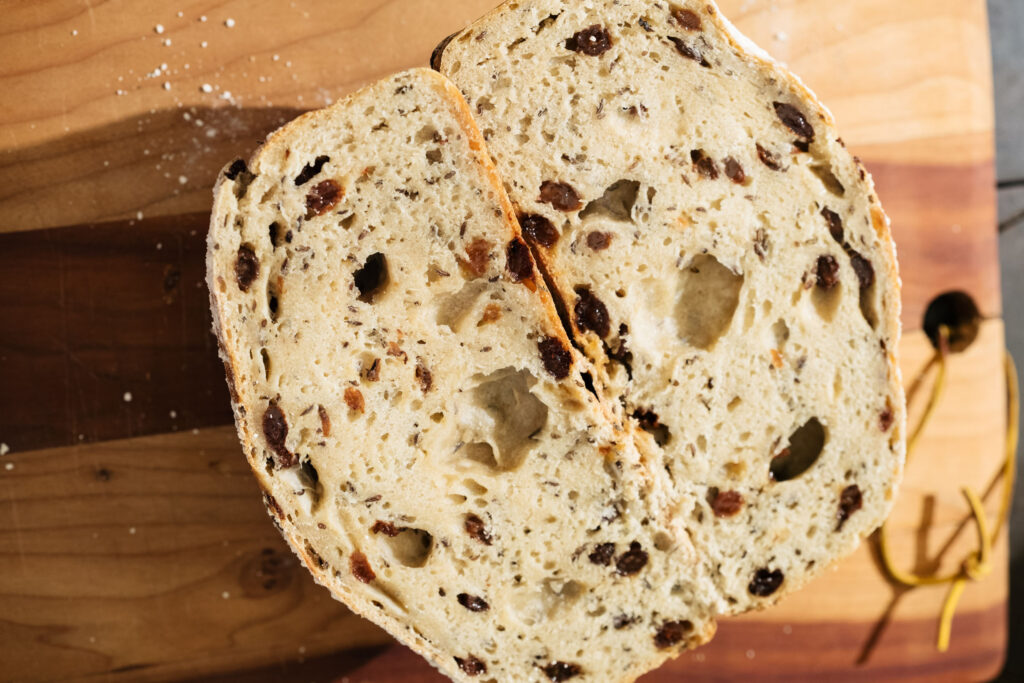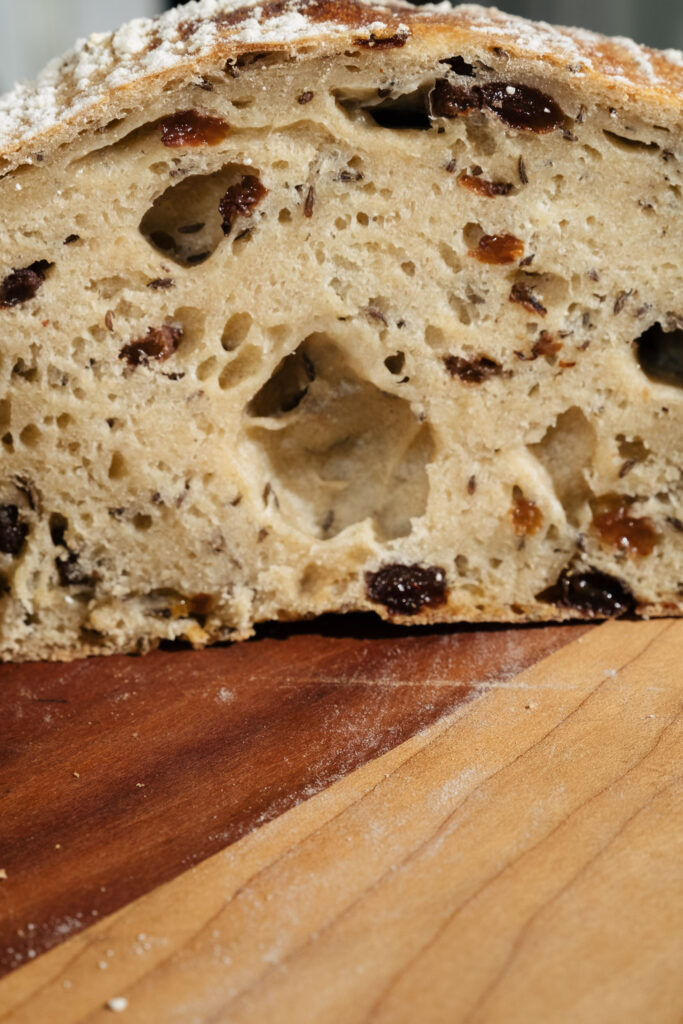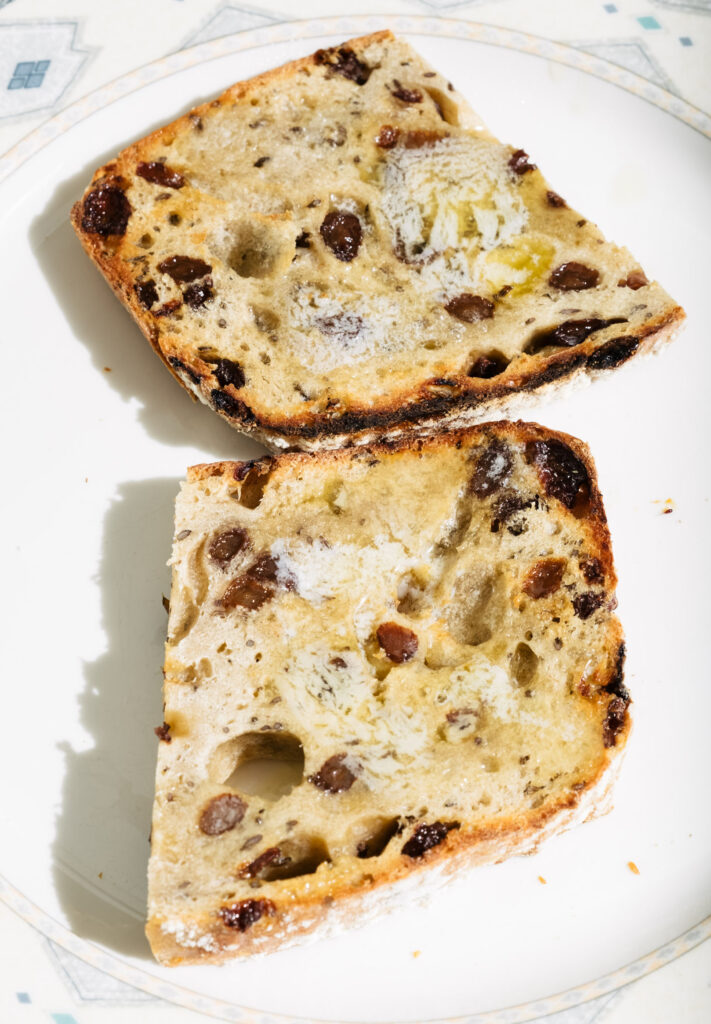cheddar flax and black pepper sourdough
Experimenting with different flavor and texture mix-ins with sourdough bread is totally gratifying and can really take sourdough to new dimensions. Nuts and seeds add crunch and dried fruit, cheese, or meat add layers of chewiness. These cheddar flax and black pepper sourdough loaves incorporate savory cheddar, chewy flax, and the spice of black pepper. Enjoy a slice on its own or bundled into a delicious sandwich. Cheddar flax and black pepper sourdough can be dressed savory or made sweet but regardless, will satisfy any glutenous craving.
ingredients
for the levain
- 30g sourdough starter (100% hydration)
- 60g whole wheat flour
- 60g all-purpose four
- 120g water
for the loaves
- 250g levain
- 750g + 50g water, divided
- 1000g all-purpose flour
- 20g salt
- 100g flax seed
- 100g sharp cheddar cheese
- 12g freshly cracked black pepper
- Rice flour (for dusting)
process
- Day 1 (overnight) make levain in the evening and let rest ~10 hours
- Day 2 (morning-afternoon) mix, stretch, fold dough ~4 hours
- Day 2 (overnight) bulk fermentation ~12 hours
- Day 3 (morning) bake for 55 minutes.
levain steps
The night before you are going to bake your bread, mix together the starter, whole wheat flour, all-purpose flour, and water until evenly combined. Cover in plastic wrap and let sit for 10-12 hours until the surface is bubbly and a small bit (about ¼ teaspoon) of the starter floats in a glass of water.
loaves steps
In a large bowl, mix together the activated levain and 750g of the water until the levain completely dissolves. Add the flour and mix with your hands or a rubber spatula until it forms a shaggy dough. Let this mixture sit for 1-4 hours as the ingredients absorb into each other, this is the autolyse stage.
After the dough has rested for an hour, evenly sprinkle the salt over the top then add the remaining 50g of water. Pinch and squeeze the dough with your fingers to make sure that the salt and water evenly incorporate.
Starting at the top of the bowl, stretch the dough up and fold it in half over itself. Turn the bowl clockwise 90° and stretch and fold it once again. Turn the bowl twice more, each time 90° and stretch and fold each time, for a total of four stretches and folds. Then let the dough sit for 30 minutes.
At this point, sprinkle half of the cheddar, flax, and freshly cracked black pepper over the top of the dough. Using your fingertips, press them into the dough and begin the first stretch and fold of the series. Turn the bowl and stretch and fold once more, then add in the remaining cheddar, flax, and freshly cracked black pepper, once again pressing them into the dough with your fingertips. Stretch and fold the dough twice more then let rest for 30 minutes.
Repeat the stretch and fold process every 30 minutes followed by a 30 minute rest over the next hour and a half for a total of six stretch and fold sequences, including the one adding in the mix-ins.
Following the final stretch and fold, let the dough rest for 30 minutes then turn it out onto a lightly floured surface and divide it in half. Work with one piece at a time and fold the dough from four corners, essentially making four flaps which join in the center of the dough like a package.
Dust two bannetons or large bowls lined with dish towels with rice flour or all-purpose flour and place the loaves seam-side up inside. Place in the refrigerator to ferment overnight.
One the loaves are ready to bake, preheat the oven to 550°F and place a 5 qt. Dutch oven or cast iron combo cooker in the oven to heat. Test that the dough is ready to bake by lightly pressing it with your finger. If the indent moves back quickly, the dough is not ready to bake. If it keeps the indentation, then the dough is ready!
Wrap a piece of parchment paper over the top of the banneton and flip it over onto the paper. Slice the top in a pattern of your choosing to ensure that the steam can release and the dough can rise to its full potential. Remove the heated dutch oven, lower the oven temperature to 500°F place the dough inside, cover, and bake for 20 minutes without removing the lid. After 20 minutes, remove the lid and bake for another 35 minutes until crisp. Repeat with the second loaf if you are baking the loaves back to back.
